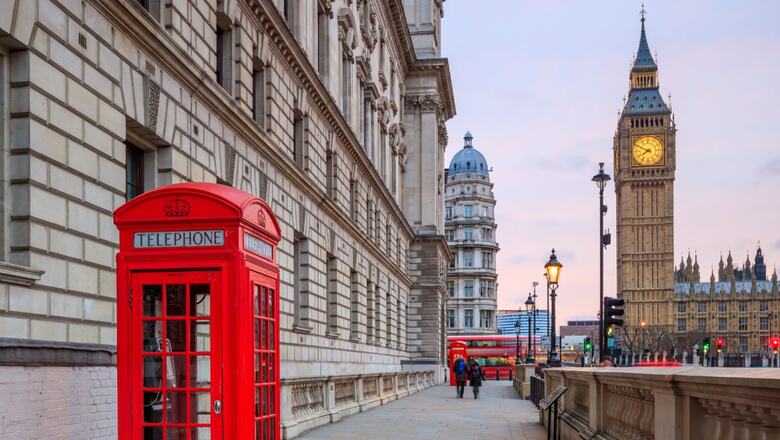
views
In summing up his idea of an ideal city Jaime Lerner, a renowned architect and urban planner, said – “The secret to the city is integration. Every area of the city should combine work, leisure, and culture. Separate these functions and parts of the city die.”
While our cities are full of workspaces, there are simply not enough leisure centres or cultural places. We are falling short of integrating art and culture into daily city life. Experts have provided a simple and non-expensive way of doing that. In addition to the existing public and private infrastructure for cultural activities, the concept of ‘Culture Kattas’ should also be incorporated into the urban planning policy.
History shows that culture has always been at the heart of urban development, and it is quite obvious through cultural landmarks and heritage sites in cities. To remain unique in the era of globalisation and integration, cities need distinctiveness, aesthetic and cultural aspects that can set them apart from the rest. To achieve this, more designated public spaces should be created for artists, performers and cultural enthusiasts.
ALSO READ | Infra Vaani | How My Home Pune Lost the Smart City Tag, One Infra Blunder at a Time
Pune’s Culture Kattas
A city like Pune has a rich cultural and political history, and is rightly known as the cultural capital of Maharashtra. It has always acted as a patron to various art forms be it classical music, classical dance, theatre, films or literature. As a result, residents in Pune are attuned to nurturing art. This is exactly why even a core annual classical music event like the ‘Sawai Gandharva Bhimsen Festival’ receives a huge response. This is a city that cherishes theatre culture even after the advent of modern technology and multiple OTT platforms. Artists from Pune, regardless of where they now live, still feel close to the city.
Now it is time to encourage and showcase the talent in the young generation as well, by opening multiple avenues for them and providing them platforms for expression of art. ‘Culture Katta’ can serve this purpose in the true sense. It could be a place where youngsters would interact with art veterans and exchange ideas. After all, the scope of art grows with interactions and collaborations.
The idea of a ‘Katta’ is not unfamiliar to Pune. It is a place where people meet up, catch up over a beverage and have unconstrained discussions. To groom the budding talent in art this ‘Katta culture’ should be refashioned into ‘Culture Kattas’ which will be accessible to commoners from diverse walks of life.
It is heartening that many such places are becoming more and more visible in Pune. For example, the ‘Kalakar Katta’ in the heart of the city on FC Road is getting a good response. The widened footpaths and sitting arrangements on JM Road and FC Road are becoming popular places to socialise and host several cultural activities.
But as Jaime Lerner said: every area of the city should have such public facilities. Pune city in terms of its civic boundary has become the largest city in Maharashtra. With the merger of 34 villages in the last six years, the responsibility of the city planners has increased. Along with fulfillment of basic civic amenities such as drinking water, roads, schools and hospitals, the cultural integration of these parts should also be kept in mind.
While we are discussing the expansion and utilisation of open spaces to inspire artistic minds, there is one more advantage in doing so. These places can also be nurtured to deepen the spiritual roots in the urban civic society. Art and spirituality are inseparable in a way. The basic motto is to convey one’s philosophy of life and science to the audience.
What New York, London are Doing Right
We must also remember that some of the most popular cities in the world attract thousands of people because of the art and culture nurtured and preserved by them. What is New York without its artistic expression? What is London without its museums and galleries? What is Paris without its artistic and cultural heritage? These cities have not only conserved their cultural heritage but have never stopped adopting the changing trends in art and promoting new artists’ work. Parts of these cities are known worldwide only for their art; for example, SoHo in New York is famous for artists’ lofts, art galleries and trendy upscale boutiques. In London, world-class art of different styles from all eras and movements is visible and the remarkable thing is smaller commercial and independent places do not hesitate to showcase the works of new and emerging artists. This is how a city maintains its relevance as an art hub globally.
In 2015, the United Nations Educational, Scientific and Cultural Organisation (UNESCO) recognised that culture is a key tool for promoting sustainable urban development through the safeguarding of cultural heritage and the promotion of the diversity of cultural expressions. Following this, it also published a report on culture for sustainable urban development called ‘Culture: Urban Future’, which has highlighted the importance of culture in ensuring social cohesion in urban areas, through its capacity as a bridge-builder for good relations and as a source of identity and reconciliation.
The development of open spaces for art to evolve as well as to strengthen the spiritual roots in an urban society will not only change the city landscape but also help improve the overall mental health of citizens and help develop a societal moral compass.
Sudhir Mehta is Chairman and Managing Director, Pinnacle Industries Limited; President, Mahratta Chamber of Commerce, Industries and Agriculture-MCCIA. The views expressed in the article are those of the author and do not represent the stand of this publication.
Read all the Latest Opinions here




















Comments
0 comment